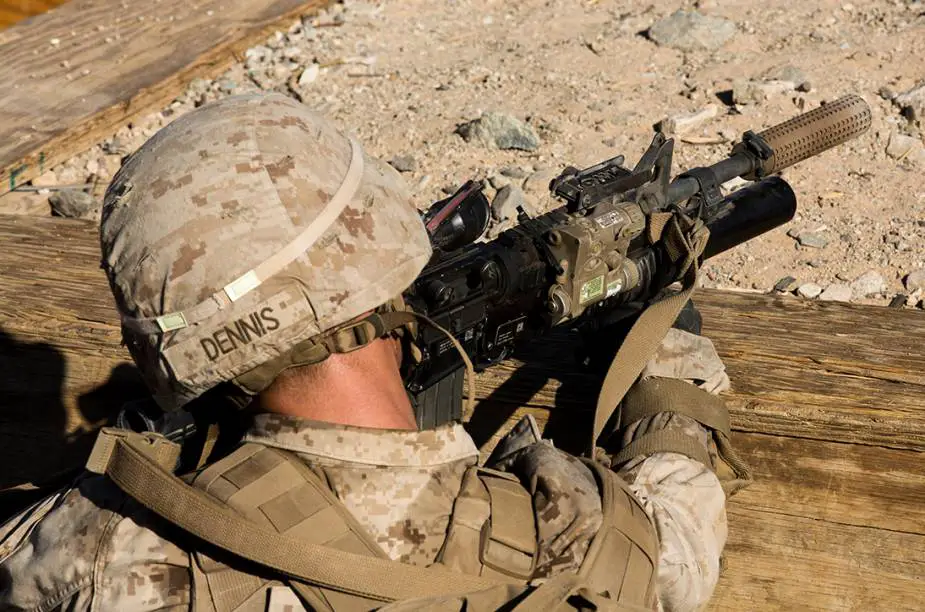Many are trained to locate, close with and destroy the enemy by fire and maneuver, or repel the enemy's assault by fire and close combat. They engage adversaries in any clime and place. Marine Corps Systems Command is tasked not only with enhancing the lethality of warfighters. The command also strives to protect them. Matt Gonzales, Marine Corps Systems Command, reports.
Follow Army Recognition on Google News at this link

U.S. Marine providing security on a company attack range in Twentynine Palms, Calif., Oct. 21, 2020. (Picture source: USMC/Lance Cpl. Sarah Petrock)
U.S Marine Corps Systems Command (MCSC) has taken another step toward increasing lethality and protection for Marines. In December 2020, the command began the process of fielding thousands of sound suppressors to infantry, reconnaissance and special operation units for employment on the M27, M4 and M4A1 rifles.
Small arms suppressors are designed to reduce a weapon’s noise, flash and recoil. They are also time-efficient, as attachment and detachment only takes a few seconds. The mass fielding of the suppressors, and their myriad benefits, represents a monumental moment for the Marine Corps. “We’ve never fielded suppressors at this scale. This fielding is a big moment for the Marine Corps.”
Maj. Mike Brisker, MCSC’s Program Manager for Infantry Weapons' weapons product manager
MCSC works with CD&I, PP&O
In recent years, the Marine Corps had already begun suppressing its M38 and M4A1 rifles. However, an increased number of commanders felt suppressing additional weapons would increase the overall lethality of the infantry.
The impetus for equipping additional weapons with suppressors came from a series of experimentations at a 2016 “Sea Dragon” event, which enables the Marine Corps to experiment with current and emerging technologies and operational concepts. At the event, a battalion employed the suppressors as part of a Marine Corps Warfighting Lab experimentation. “The positive feedback from that experiment was the primary driving force behind procuring suppressors,” said Brisker. “We’ve had a few limited user experiments with various units since that time, and all of those events generated positive reviews of the capability.”
Before acquiring the suppressors, MCSC worked with the Marine Corps’ Combat Development and Integration; Plans, Policies and Operations; and the Fleet Marine Force to determine the optimal concept of distribution to support the close combat Marine. “Our intent was to leverage commercially available technology to support the near-term modernization required for our close combat Marines,” said Billy Epperson, the Infantry Weapon Capabilities Integration Officer at CD&I.
Epperson added that the Marine Corps conducted Limited User Evaluations in 2019 with commercial suppressors provided by vendors showcasing the latest and greatest in technology to characterize requirements in support of an acquisition effort that began in fiscal year 2020.















